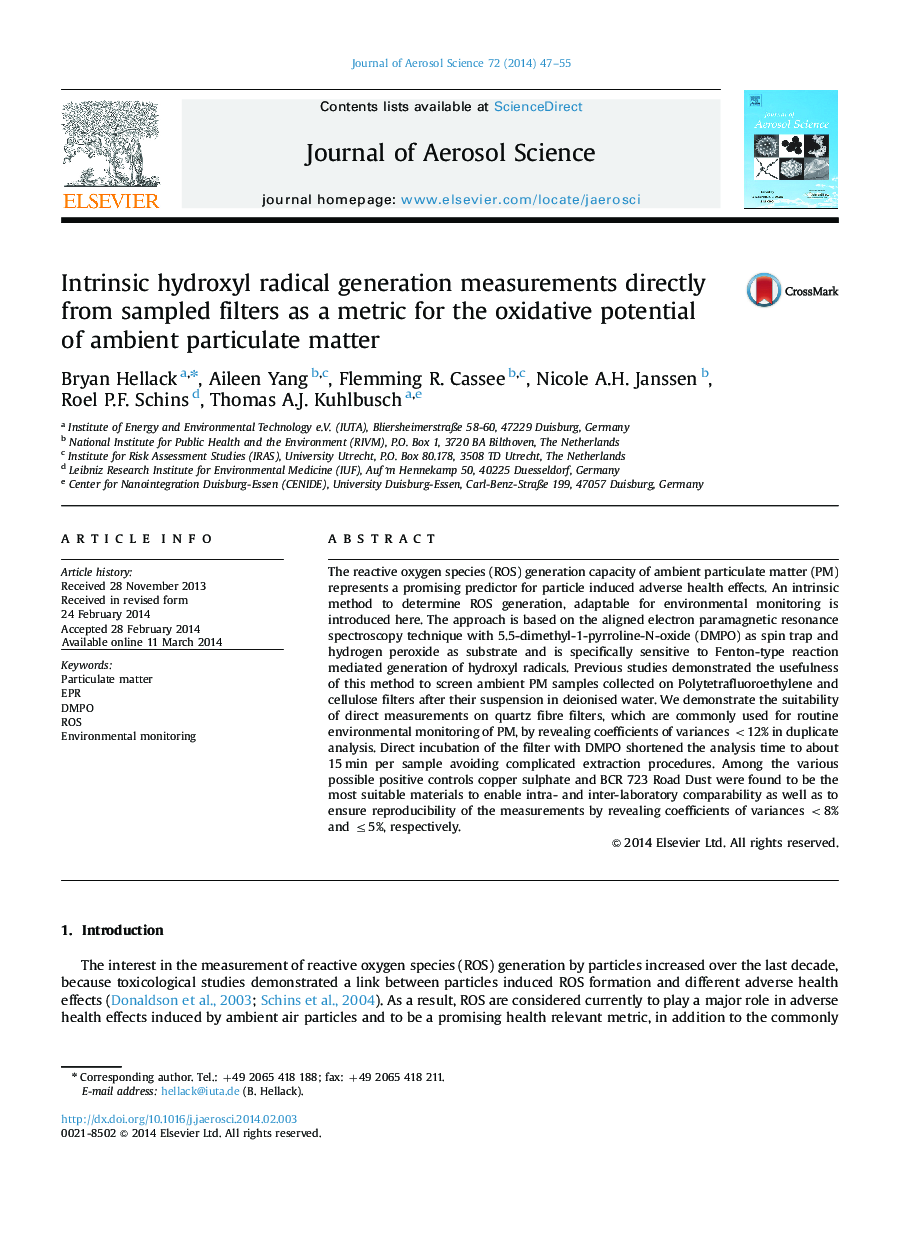| Article ID | Journal | Published Year | Pages | File Type |
|---|---|---|---|---|
| 4452350 | Journal of Aerosol Science | 2014 | 9 Pages |
•A comparison of ambient PM elicit, intrinsic ROS detection method collected on Polytetrafluoroethylene and quartz fibre filters is presented.•An adapted method for PM elicit ROS measurements on quartz fibre filters which are commonly used for routine environmental monitoring of PM is shown to be applicable.•The identification of suitable materials for method standardisation enabling intra- and inter-laboratory comparability is presented.
The reactive oxygen species (ROS) generation capacity of ambient particulate matter (PM) represents a promising predictor for particle induced adverse health effects. An intrinsic method to determine ROS generation, adaptable for environmental monitoring is introduced here. The approach is based on the aligned electron paramagnetic resonance spectroscopy technique with 5.5-dimethyl-1-pyrroline-N-oxide (DMPO) as spin trap and hydrogen peroxide as substrate and is specifically sensitive to Fenton-type reaction mediated generation of hydroxyl radicals. Previous studies demonstrated the usefulness of this method to screen ambient PM samples collected on Polytetrafluoroethylene and cellulose filters after their suspension in deionised water. We demonstrate the suitability of direct measurements on quartz fibre filters, which are commonly used for routine environmental monitoring of PM, by revealing coefficients of variances <12% in duplicate analysis. Direct incubation of the filter with DMPO shortened the analysis time to about 15 min per sample avoiding complicated extraction procedures. Among the various possible positive controls copper sulphate and BCR 723 Road Dust were found to be the most suitable materials to enable intra- and inter-laboratory comparability as well as to ensure reproducibility of the measurements by revealing coefficients of variances <8% and ≤5%, respectively.
